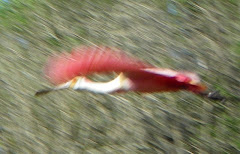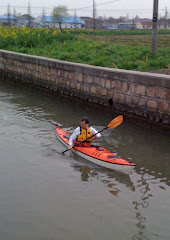Balance

One of my own challenges was to stand up in my Vyneck sea kayak; something I saw somebody do on a Welsh lake years ago and vowed to copy. It took me a lot of swimming around, some strategy and some perseverance before I could wriggle from the small cockpit to sit on the rear
So a sense of balance is something we can develop if we try, if we challenge ourselves. One of the improvements we make in time is to relax more, which helps us wobble less. As we learn to edge a kayak to turn, so our hips loosen up and we become more adept at keeping our shoulders above our hips. As our posture improves it helps keep our weight centralized. The improvements don’t just show on the water; as we react more quickly to a wobble on the water, so we react quickly to a spilled glass or a dropped pen.
Balance; In Search of the Lost sense, by Scott McCredie, Little, Brown and Company, 2007
So what is our “sense of balance”? We have sight, hearing, taste, smell and touch as long recognized and studied senses, so the long neglected and under-studied “balance” is truly the “sixth sense”. This year, a friend of mine,
Falling is how a great number of people begin
the slide from health to old age or from old age to death. There is a connection between ageing and reduced balance. Brittle bones don’t help, but balance is something we “use or lose”. In fact if you think about what helps us estimate the comparative ages of people we see, apparent agility and balance, posture and reaction time are big helpers. Someone who has quick reactions, good posture, is agile and has good balance is perceived as younger than someone who moves slowly and cautiously, with poor posture and tentative balance.
Even birds practice... like this one, balancing on one leg in New Zealand....
Might kayaking help us maintain our youthfulness into old age by maintaining our bone strength and challenging our balance in a safe way? Maybe. Smiling a lot might help too, but better; read
Happy New Year, and may you succeed in balancing all the way into 2008 and far beyond!
(There is a little more about balance on my playak blog...)
















































